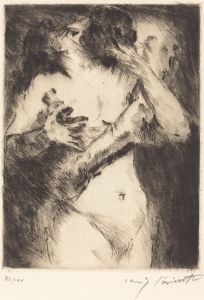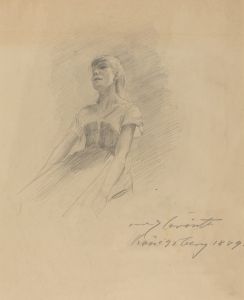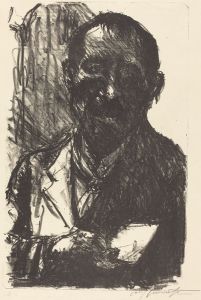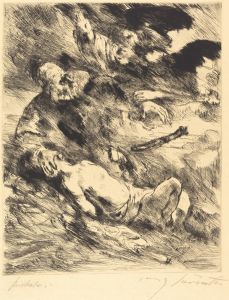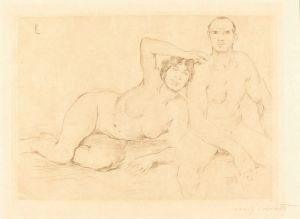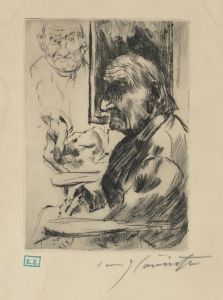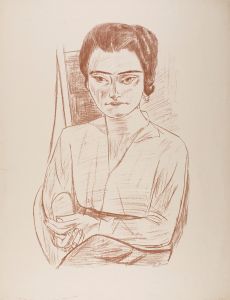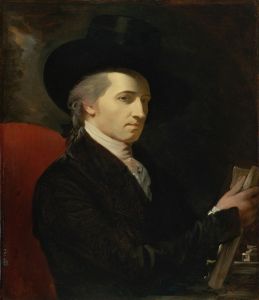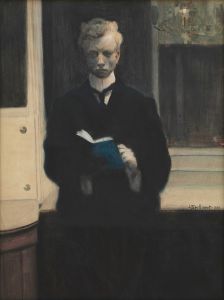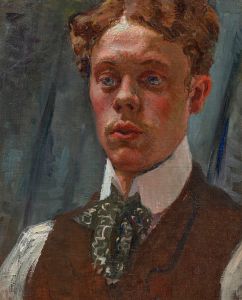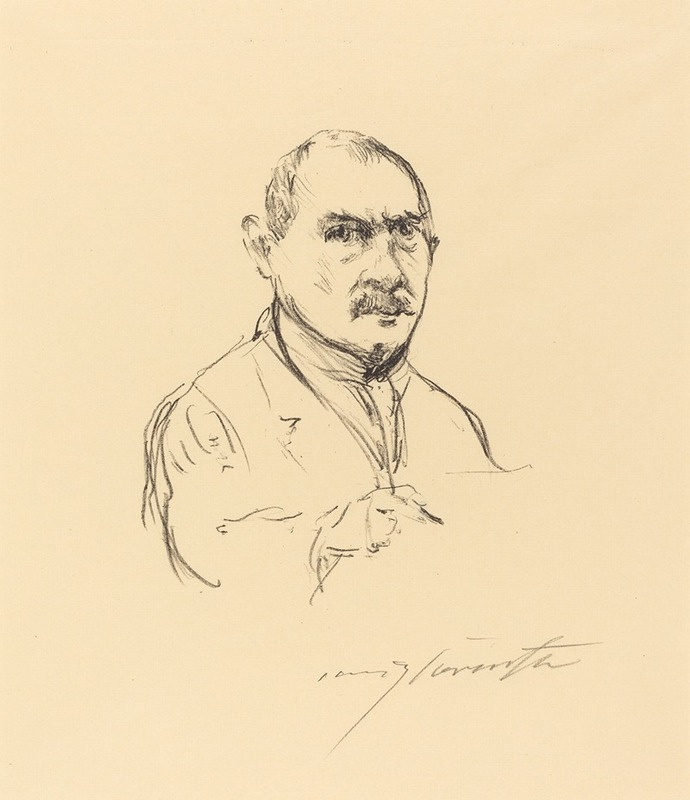
Self-Portrait
A hand-painted replica of Lovis Corinth’s masterpiece Self-Portrait, meticulously crafted by professional artists to capture the true essence of the original. Each piece is created with museum-quality canvas and rare mineral pigments, carefully painted by experienced artists with delicate brushstrokes and rich, layered colors to perfectly recreate the texture of the original artwork. Unlike machine-printed reproductions, this hand-painted version brings the painting to life, infused with the artist’s emotions and skill in every stroke. Whether for personal collection or home decoration, it instantly elevates the artistic atmosphere of any space.
Lovis Corinth was a prominent German painter and printmaker, known for his significant contributions to the transition from Impressionism to Expressionism in the late 19th and early 20th centuries. Among his extensive body of work, Corinth produced numerous self-portraits that offer insight into his evolving style and personal introspection. One of these notable works is "Self-Portrait by Lovis Corinth."
Lovis Corinth was born on July 21, 1858, in Tapiau, East Prussia, which is now Gvardeysk in Russia. He studied art in Königsberg, Munich, and Paris, where he was influenced by the prevailing art movements of the time. Corinth's early work was characterized by a naturalistic style, but he gradually embraced a more expressive approach, which became more pronounced after a stroke in 1911 that affected his physical abilities and artistic style.
"Self-Portrait by Lovis Corinth" is one of many self-portraits he created throughout his career. These self-portraits are significant as they document not only his physical appearance but also his psychological state and artistic evolution. Corinth's self-portraits often reveal his introspective nature and his engagement with the themes of identity and mortality.
In his self-portraits, Corinth frequently employed a vigorous brushwork and a bold use of color, reflecting his shift towards Expressionism. His approach to self-portraiture was deeply personal, often capturing himself in various emotional states and experimenting with different artistic techniques. This exploration of self was not only a reflection of his personal experiences but also a commentary on the broader human condition.
Corinth's self-portraits are also notable for their honesty and lack of idealization. He often depicted himself with a raw and unflinching realism, highlighting his aging features and the impact of his stroke. This candid approach set his work apart from many of his contemporaries, who often favored more flattering representations.
The self-portraits of Lovis Corinth are housed in various collections and museums around the world, reflecting their enduring significance in the art historical canon. They continue to be studied for their technical mastery and emotional depth, offering insight into the artist's life and the broader cultural context of his time.
Corinth's contribution to art extends beyond his self-portraits. He was a prolific artist who worked in various genres, including landscapes, still lifes, and historical scenes. His work is characterized by a dynamic energy and a keen observation of the world around him, making him a pivotal figure in the development of modern art in Germany.
In summary, "Self-Portrait by Lovis Corinth" is an exemplary work that encapsulates the artist's journey and his impact on the art world. Through his self-portraits, Corinth not only explored his own identity but also pushed the boundaries of artistic expression, leaving a lasting legacy that continues to inspire and resonate with audiences today.







